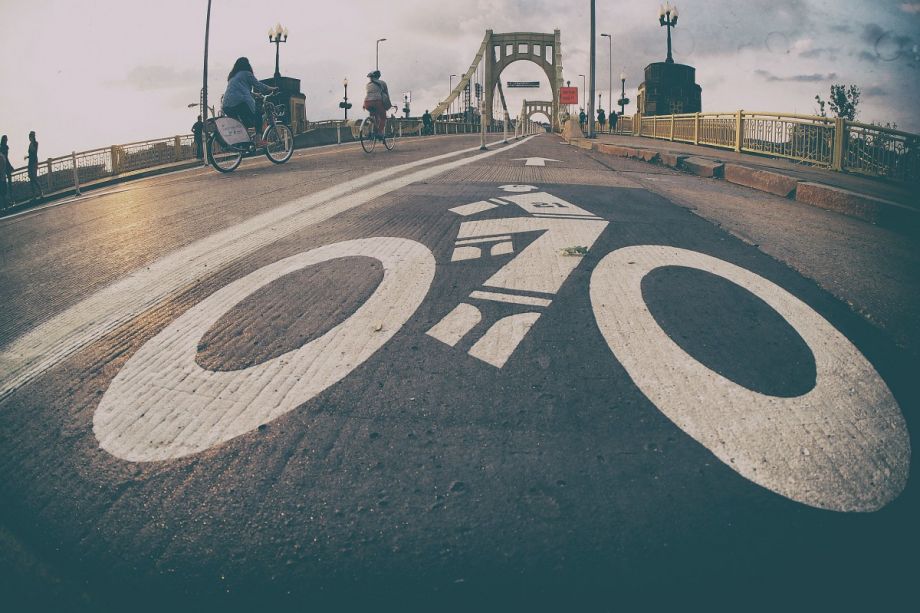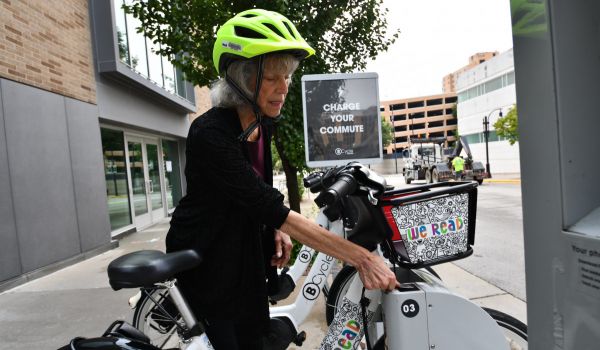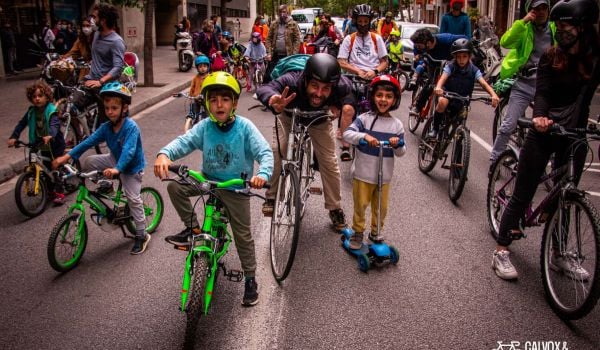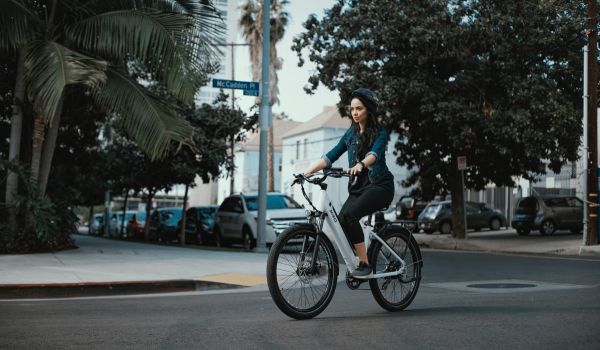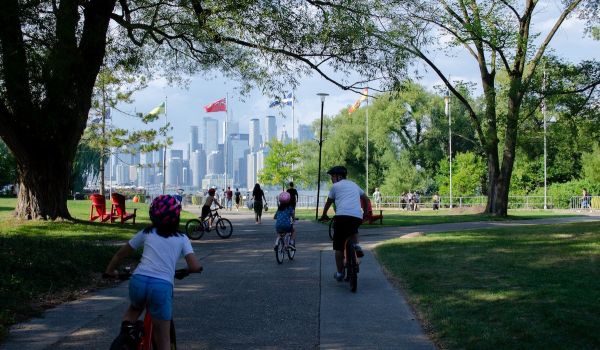Out of the largest 60 cities in the United States, Pittsburgh ranks first … when it comes to oldest bike plan. It dates all the way back to 1999 — “and for all intents and purposes, that bike plan is done,” says Eric Boerer, advocacy director for the organization BikePGH. “There’s a whole lot that has changed since 1999, not only in the city but the world.”
That ranking will soon change as Pittsburgh prepares to release its Bike(+) Plan later this year, a draft of which has recently gone through community review. The plan has been considerably shaped by modern-day challenges that include climate change and new mobility options like electric bicycles. Perhaps most importantly, the city’s transportation planners are framing this plan as a necessary shift in accommodating new forms of mobility.
“We need to move beyond whether there needs to be [cycling] connections,” says Karina Ricks, director of Pittsburgh’s Department of Mobility and Infrastructure. “Public consultation is about how, where, and the details of design … but we need to move beyond whether or not there will be a connection that we are obligated to provide for public safety.”
There are various reasons it’s taken over 20 years to get to this point, according to Boerer. “In 1999 we had zero bike racks, small segments of trails, some bike lanes installed in the ‘70s that only went to parks,” he says. The 1999 plan addressed the absence of cycling infrastructure — the city’s bike network has grown from about 11 miles in 1999 to roughly 70 miles in 2019 — but updating it became “a comedy of errors,” Boerer says.
Pittsburgh’s previous mayor kicked off planning for a bike plan in 2012 but plans stalled after he did not seek reelection. The current mayor, Bill Peduto, was supportive of a plan but it took time to get off the ground. Following the passage of a Complete Streets policy in 2016 and the establishment of the Department of Mobility and Infrastructure in 2018 there was finally enough momentum.
“We’ve spent a number of years pushing for a new plan,” says Boerer. “It’s taken a really long time, but with that being said hopefully we will end up with a better product.”
The Department of Mobility and Infrastructure shares the sentiment, especially considering the city spent five years engaging over 750 residents around the draft plan released this February. Five years ago, according to Ricks, there was resistance to increased bicycling infrastructure from some Pittsburgh city council members. But as the city’s bike share system, Healthy Ride, has grown, “we’ve seen a sea-change moment,” she says. “This year, those same council members were asking about getting more of these [bikes] in my district.”
Increased public support has bolstered the agency’s priorities; namely, fast-tracking implementation due to the climate crisis and accommodating alternative mobility options. (Bike(+) was used to refer to not just conventional pedal cycles, but other personal mobility devices such as electric pedal assist bicycles, kick scooters and e-scooters.)
The plan ultimately proposes an additional 156 miles of safe bicycle facilities, expanding the total network from 30 miles of on-street facilities and 44 miles of trail to 150 miles on street and 76 miles of trails for a total of over 226 miles of travel lanes for bicycles and other low-speed travel modes. It proposes “quick build” projects to test permanent installations, as well as 60 miles of infrastructure built over the next two years. The full mileage will be built over 10 years.
Implementation is based around five goals: A Vision Zero stance saying no one dies traveling on city streets; that all households can access fresh fruits and vegetables 20 minutes from home without a private car; making walking and bicycling are “the most joyful mode” for short distance trips; ensuring no household spends more than 45 percent of household income for basic housing and mobility; and finally that “Pittsburgh streets and rights of way reflect the values of our community.”
Ricks points out that 40 percent of driven trips in the city are less than two miles in distance — and it’s been shown that cutting short car trips across the United States can have a dramatic impact on carbon emissions. “We can capture those people, we need to make it inviting for them,” Ricks says.
The key, she believes, is implementing lanes that can accommodate different speeds of mobility options, from a skateboard to an e-bike. “Our conventional five-foot bike lanes are not wide enough,” she says. “It means we now need to think about seven-, eight-feet wide facilities, while engaging other interventions to keep motorists from using them.”
That’s going to be a challenge on Pittsburgh’s narrow streets. “I go to other cities and see a four-lane road with bike lanes on it, and that doesn’t even exist in our city,” Boerer says, “We don’t have a street that wide.”
The plan makes clear the city will have to get creative, utilizing new intersection treatments, road diets, narrowing travel lanes, street redistribution and on-street parking reductions in addition to dedicated bus lanes. As an example, Boerer points to a Bus Rapid Transit project between Oakland and downtown Pittsburgh with a “complete streets” redesign integrating protected bike lanes and improved pedestrian infrastructure.
While proposals to redistribute car space to bikes are often met with “bikelash,” the Department of Mobility and Infrastructure will support implementation and work with communities in cases where trade-offs need to be addressed. “We have to provide safe accommodations to people who choose to, or must, travel this way,” Ricks says.
The Department also faces a challenge securing enough funding for the 10-year implementation, which the city has not fully committed. “The upside is we have about $70 million a year we put into transportation and infrastructure projects, and on a good year we average $1.5 million focused on bike facilities,” Ricks says. “We get a lot done for that sum of money, but it’s a small dollar amount relative to the productivity.”
Community engagement was mostly supportive following the release of the draft report, according to Ricks, and feedback will be incorporated by this spring. And after years pushing for a bike plan, BikePGH is finally ready to promote this one to residents and start building support for implementation.
“We’re going to have to step up our general efforts,” says Boerer. “I get the sense that in general, Pittsburghers do support it.”

Emily Nonko is a social justice and solutions-oriented reporter based in Brooklyn, New York. She covers a range of topics for Next City, including arts and culture, housing, movement building and transit.
Follow Emily .(JavaScript must be enabled to view this email address)

